





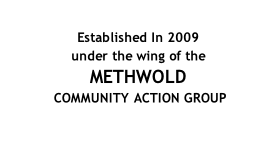




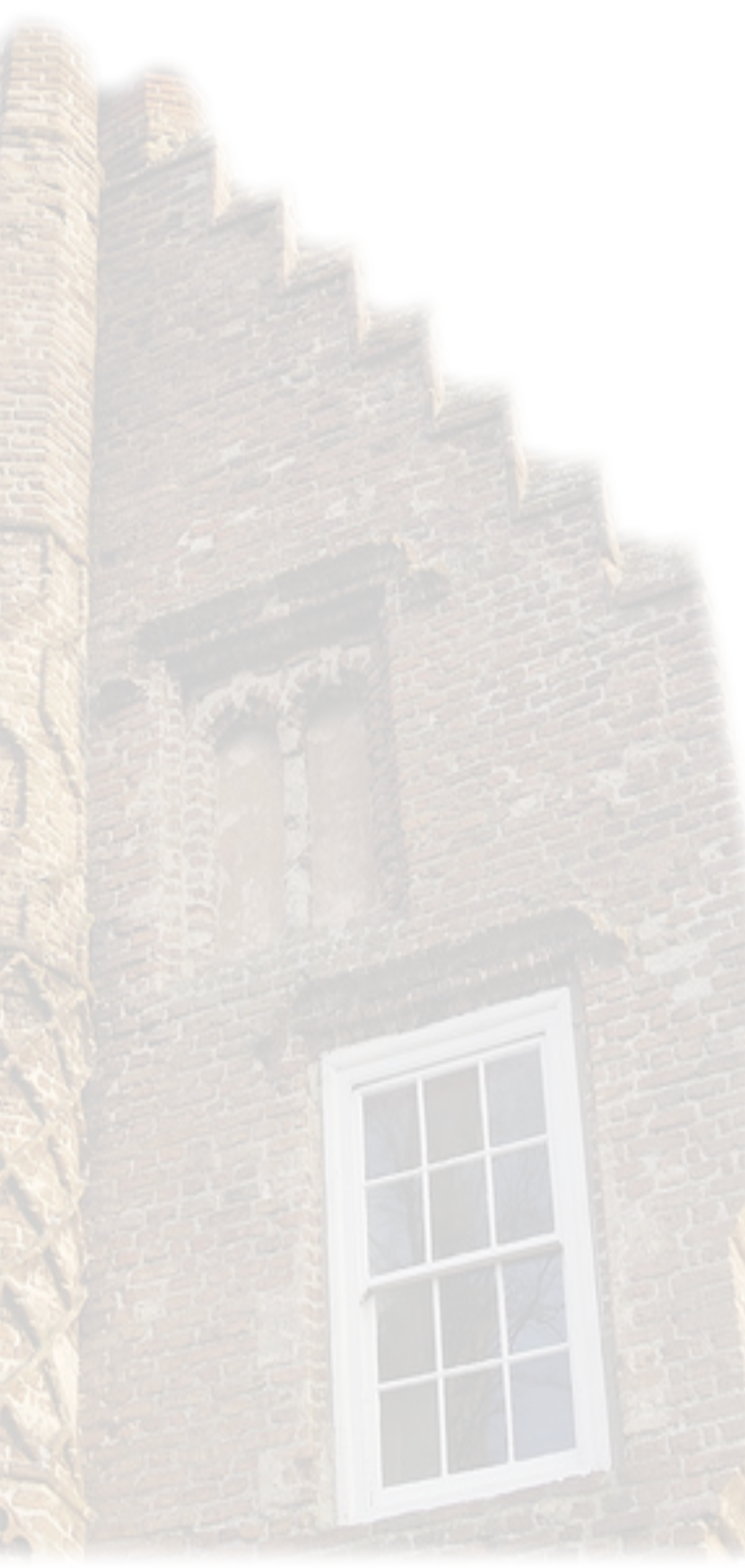
METHWOLD OLD VICARAGE, METHWOLD, NORFOLK
Architecturally, the Old Vicarage is something of a puzzle. Its timber framing and brickwork are
early – probably late fifteenth century. Its wall paintings are dated a little later, in the sixteenth
century. Originally thatched, it would have been a large and prestigious house for its period; today’s
roofspace has lime-
floors. While the central and south sections are later extensions, their brick plinth also dates from
1490-
So why, even at a period when the power and influence of the Church was at its height
immediately before the Dissolution of the Monasteries, would the house for a priest in a small
village on the edge of the fenland be built with such a glorious but worldly display of moulded
brickwork? To an extent the same puzzle applies to the moulded beams inside and even more so to
the wall paintings (although these may reflect the taste of later, non-
The interconnecting rooms and large downstairs chamber suggest multiple uses as well as lodging
for a priest. The building of church houses was a common feature of the late-
buildings used much as village halls are today as a meeting room or space for the villagers to
congregate for Church Ales. Perhaps there were links between the living and nearby Castle Acre
Priory; a church house could also double as a lodging block for visitors to a priory. Equally, the
manor of Methwold had been part of the Duchy of Lancaster and therefore Crown property since
1347; perhaps accommodation was required for the Crown representative. Perhaps simply the
house was built for a lay owner and passed into church ownership later. Certainly church houses
were built to a high standard: the Priest’s House in Halcombe Rogus was also a church house from
a similar date and is a far more typical expression of the form, with fine but essentially sober
detailing. But all this is speculation in trying to resolve why Methwold Old Vicarage presents such
an essentially secular form – the documents have yet to provide an answer.
With all the debate that surrounds the divestment of vicarages by the Church, it is somehow
reassuring to discover that Methwold Old Vicarage has been an ‘old’ (in the sense of former)
vicarage since the mid-
was an impropriate vicarage, or one whose upkeep had been handed to the lay patron of the living.
But Methwold parish had been impropriate since long before that. As early as1533, ‘a fine was
levied between the King and Thomas, Prior of Castle-
Advowson of the Vicarage, and soon after, on 22 Dec in the said Year, the King granted them to
Thomas, Duke of Norfolk’ (assuming this does indeed refer to this house rather than a different one
since lost). It must be from these next years that the wall paintings date. In 1614, the rectory and
the advowson of the vicarage were alienated to Sir Henry Hobart. While some vicars of Methwold
listed in St George’s opposite must have lived in the vicarage, by the 1670s the house had lay
tenants and possibly long before that.
By 1800, the house was in a state of some disrepair, was being lived in by two families and
considered unsuitable for the hospitality deemed appropriate for a vicar to offer. This was used by
the patron, John Partridge, as justification for the uniting of the livings of Methwold and Cranwich
at this date. By the mid-
shifted the emphasis from hospitality to care of souls in the duties of their vicars. Cranwich and
Methwold were therefore disunited in 1853 and in 1854 a ‘neat new vicarage house’ was erected
at the other end of the parish in Southery.
This was lamented by Rev. John Denny Gedge in his history of the village in 1893: ‘Oh! If my
predecessor, instead of erecting my vicarage house out of contact with the village, at one end of
this enormous parish of nearly 14,000 acres, had but accepted … the New Hall adjoining, and
secured the old Vicarage for parish rooms, for clubs, for mothers’ meetings… and other such uses,
restoring the two long apartments of which it consists to their old dimensions … Oh! if some
charitable millionaire even now would buy it, and its price would be very small, and present it to the
parish.’ By the Rev. Gedge’s day, the Old Vicarage was still divided into two cottages and was still
showing signs of neglect – ‘now, alas! The tenant of one of the two cottages …has been allowed
to smother it with ivy. Oh! If some nightly visitant would but sever the stems of that accursed
plant. Why should a community have no power against private vandalism?’
The building’s decline continued into the twentieth century. By the 1930s, its poor condition
brought it to the attention of the Society for the Protection of Ancient Buildings. Despite their
efforts on behalf of the building, the absentee landlord seemed to be hoping to demolish it and
rebuild. It had become tenements for four families, each with a living room and larder and two
bedrooms and a communal tap outside. By the early 1960s, it was scheduled for demolition as unfit
for human habitation. Its saviour then appeared in the form of Monica Dance (Secretary of the
Society for the Protection of Ancient Buildings from 1939 to 1978), who bought the Old Vicarage
with her husband Harry in 1964 and restored it with characteristic sensitivity. In 1979 the Dances
handed their former home, Manor Farm, to Landmark’s care and moved to Methwold. Over the
years the Dances hosted many gatherings of the SPAB scholars at the Old Vicarage, young
craftsmen being trained in traditional skills under the aegis of the SPAB.
When Monica Dance died in 1998 she left the Old Vicarage to the SPAB, who then approached the
Landmark Trust for help with the ongoing maintenance of the building.
It is a timber-
jettied along its west elevation. This range has carved spandrels to the supporting brackets, with
stumpy octagonal shafts and capitals. The extension at the rear was added later. The building’s
chief glory is the spectacular stepped brick end-
and an octagonal chimneystack. The stack is divided into five zones by moulded bands decorated in
a variety of patterns. This gable is unique to the area and possibly beyond. The main ground floor
chamber holds some fine beams, the smaller timbers having a simple running roll-
larger with a crumpled ribbon twisted around the shaft, tied at intervals. The motif is echoed on
the bressumer above the moulded brick fireplace (which has unfortunately been hacked back in the
past). Similar features are also found in the interconnecting suite of rooms above, together with
some early wall paintings also dating from the sixteenth century.
When the Dances came to restore the building in the 1970s, they kept the evidence of the
building’s division into cottages with the change of floor level in the main chamber. They
rediscovered the five-
intervention in the repairs of the timber frame and internal fittings and their insertion of the large
window on the ground floor are also clear and are identified through the paint regimen. Few
changes were made when the building became a Landmark; the Landmark accommodation is
limited to the north and central sections of the house (the rest is empty for now). A new bathroom
and kitchen were installed in the same rooms used by the Dances for these purposes and wiring
and heating were upgraded. Otherwise, the only visible change is a new colour scheme inside and a
heavier coat of limewash for the members in the timber frame. We hope Monica and Harry Dance
would approve of this gentle transformation.

The Landmark Trust is a building preservation charity that rescues historic buildings at risk and lets
them for holidays. Methwold Old Vicarage sleeps up to 5 people. To book the building or any other
Landmark property for a holiday, please contact us.
The Landmark Trust Shottesbrooke Maidenhead Berkshire SL6 3SW
Patron HRH The Prince of Wales Chairman Martin Drury CBE Director Peter Pearce FRICS
Charity registered in England & Wales 243312 and Scotland SC039205
Bookings 01628 825925 Office 01628 825920 Facsimile 01628 825417 Website www.landmarktrust.org.uk

THE OLD VICARAGE
Details from The Landmark Trust
As the current owners, the Landmark Trust is a building preservation charity that rescues historic buildings at risk and lets
them for holidays
Crown Street, Methwold
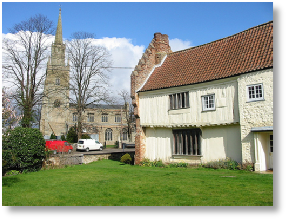
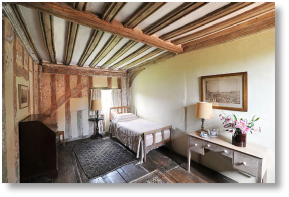
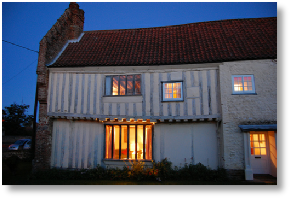
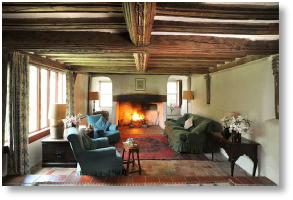
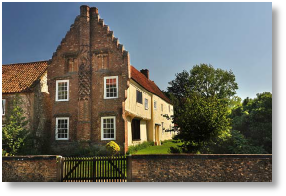
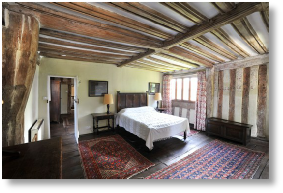
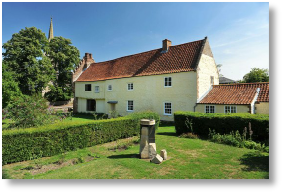
THE LANDMARK TRUST